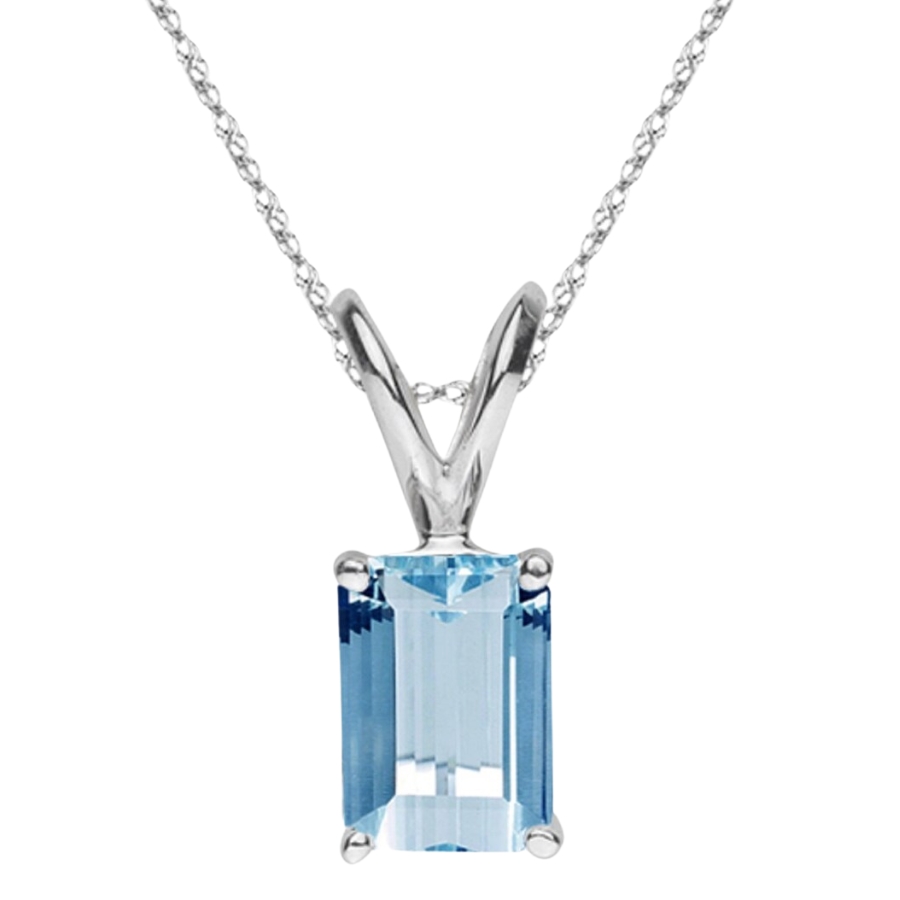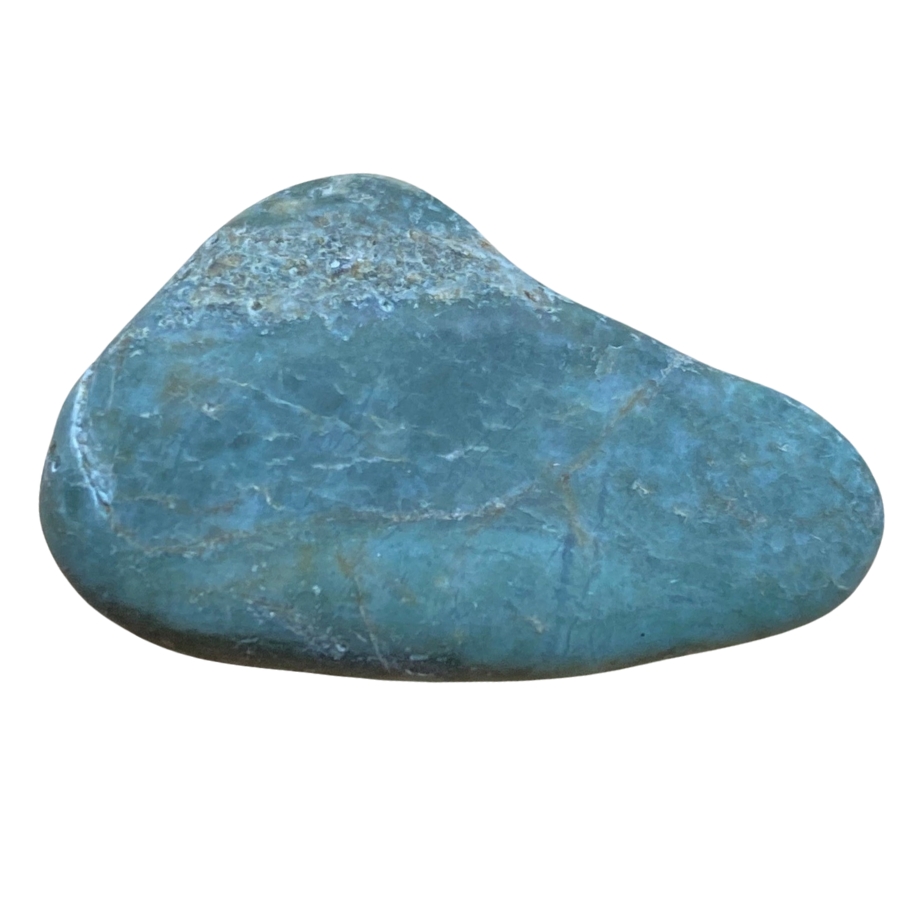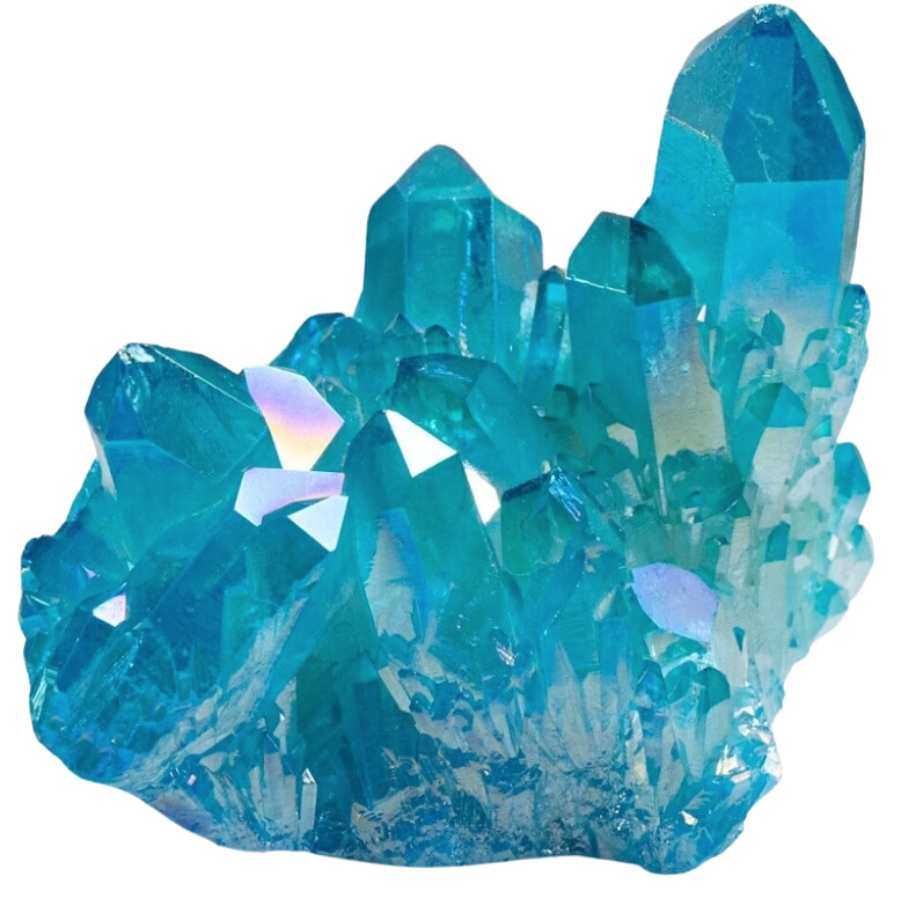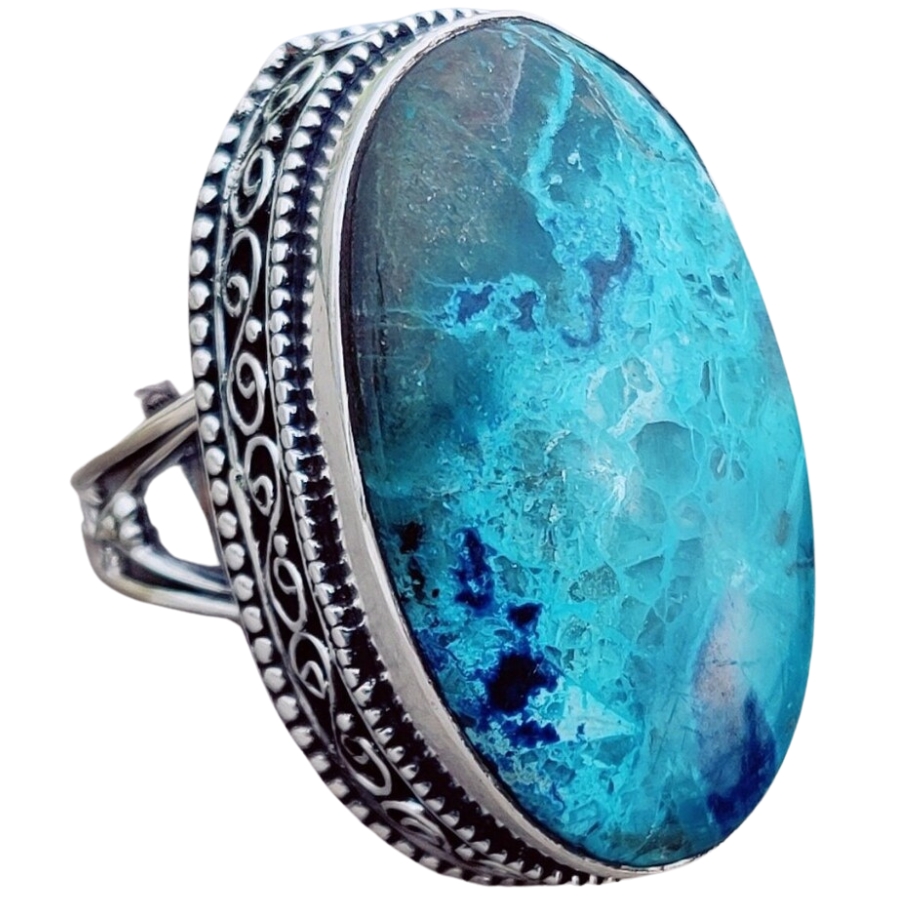Aquamarine-colored crystals are like little pieces of the sky and sea captured in stone. These gems, with their shades of blue that remind you of a clear summer day or the calm ocean, are more than just pretty.
They’re part of a fascinating world of crystals in this cool, soothing color. Imagine a range of blues, from the lightest sky blue to a deeper ocean hue, each shimmering and sparkling in its way.
They have deep and exciting meanings. People have appreciated these blue beauties for centuries, thinking they bring peace, calm, and inspiration.
We’re not just talking about aquamarine crystals in this piece; we’re going to talk about our all-time favorites. Each has its sparkle and magic, making them perfect for anyone who loves the beauty and mystery of natural objects.
Our Favorite Aquamarine Crystals
Get lost in the beautiful world of our favorite aquamarine crystals. Each one has its own story to tell. Find out what these beautiful stones offer, from aquamarine’s classic beauty to secret gems that sparkle with a color that reminds you of the sea.
Amazonite

A beautiful green to blue-green crystal called amazonite has a past as colorful as its color. It gets its name from the Amazon River, but it’s not found there. Egyptians thought that amazonite brought good luck and used it to make jewelry and amulets.
Unique to amazonite is a property called “tectosilicate,” which is in the feldspar group. This property makes it both beautiful and strong. It has a bright color ranging from bright green to aqua blue, and it often has white streaks that make it stand out.
Amazonite is found worldwide, including the USA, Brazil, Russia, and Madagascar. Many things are made from it, including beautiful jewelry and home decor.
Aquamarine

The stunning blue to greenish-blue colors of aquamarine make it a very pretty gem. The Latin words “aqua,” which means “water,” and “marina,” which means “sea,” give it its name.
This is because its colors look like the ocean. People have loved this gem for hundreds of years. Sailors even wore it as a good charm to keep them safe on the water and calm the waves.
Emeralds and aquamarine are both beryls, which is the name of a type of stone. This makes the stone tough and long-lasting, making it great for everyday wear.
It’s often shaped into different pieces and used to make rings, bracelets, and earrings, among other things.
It can be found in Nigeria, Madagascar, Zambia, and Pakistan, but Brazil is where it’s most well known.
People like aquamarine not only because it looks nice, but also because it makes them feel calm. Not only is its clear, sea-blue color nice to look at, but it also makes us think of how relaxing and calm water is.
Blue Jade

Within the realm of crystals, blue jade stands out as a one-of-a-kind and beautiful stone. It’s related to jade and is famous for the beautiful shades of blue it has, from light sky blue to deep, rich azure.
As a result of its reputation for relieving side pain, the name “jade” comes from the Spanish phrase “piedra de ijada,” which means “stone for the pain in the side.”
It’s a tough and long-lasting stone that can be used for many things. Often, it’s carved into pretty jewelry like necklaces and bands. Additionally to jewelry, it’s utilized in ornamental things and at times for therapeutic purposes.
There are several places where you can find blue jade, such as the US, China, and Italy. The stones have slightly different colors in different places, so each one is one of a kind.
Chrysocolla

Chrysocolla is a beautiful rock known for its vivid blue-green color that makes you think of the earth’s natural beauty.
The word chrysocolla comes from the Greek words ‘chrysos,’ which means gold, and ‘kolla,’ which means glue. In the past, it was used to join gold together.
This stone has a long past. The Egyptians and Greeks loved chrysocolla for its beauty and used it to make jewelry and other arts and crafts. People thought it could bring peace and knowledge.
Because it’s often found mixed with other minerals like quartz or malachite, each piece is one of a kind. You’ll see it used to make bracelets, earrings, and other beautiful jewelry, as well as home decor.
Chrysocolla is mostly found in places where copper is mined. Sources often come from places like the US, Chile, and Russia.
Many people love and value this stone because of its calm qualities and mix of blues and greens.
Paraiba Tourmaline

Paraiba tourmaline is a very rare and unique gem. Its bright blue and green colors make it stand out. In the 1980s, it was found for the first time in Paraíba, Brazil. This is where it got its name.
Compared to other gemstones, this one is pretty new, but its bright, unique colors made it famous very fast.
The unique thing about Paraiba tourmaline is that it has bright, intense colors. Copper is present in the stone, which is not common in tourmalines.
This gives the stone its shade. With its bright blue, green, and sometimes purple glow, it looks like it’s lit from the inside.
This stone is very rare and is mostly found in Brazil. Similar stones have also been found in Nigeria and Mozambique. Because it is so rare and has a unique color, it’s very expensive and sought after.
Paraiba tourmaline is often found in rings and bracelets that cost a lot of money. Most people who want something different and eye-catching choose this color.
People love Paraiba tourmaline because it’s so beautiful and exciting to be around. Because of its unique colors, it’s a gemstone that sticks out in the crystal world.
Swiss Blue Topaz

The bright blue color of Swiss blue topaz makes it a beautiful gem. It’s like looking up into a beautiful sky with no clouds.
This shade of topaz is called “Swiss blue,” and it’s made by heating and irradiating clear or light-colored topaz to bring out the bright blue.
Topaz it’s named from the Greek word for St. John’s Island in the Red Sea, which means “Topazios.” In the past, yellow stones were mined on this island. However, most of the Swiss blue topaz we see today is a new product.
Because it lasts a long time, Swiss blue topaz is great for making rings, bracelets, and earrings. Many people choose it when they want something beautiful and strong.
Topaz is found in many places, such as Brazil, Russia, and Sri Lanka. On the other hand, the Swiss blue type is made in a lab, making it easier to find and cheaper.
Swiss blue topaz is valued for its beautiful color and the peace it is thought to bring. This item’s bright blue color is both eye-catching and makes the person wearing it feel calm and clear.
Dark Aquamarine Crystals
Explore the mystery beauty of dark aquamarine crystals, whose deep, rich blue colors bring the ocean’s depths to mind. With their intense color and interesting properties, they add a new twist to the standard beauty of aquamarine.
Aventurine

The way aventurine sparkles and shines is called aventurescence, and it really draws your attention. Little minerals inside the stone give it a special sparkle that makes this happen.
The word “aventurine” comes from the Italian phrase “a ventura,” which means “by chance.” This sparkling effect was found in glass by accident in the 1700s, which is how the name came to be.
Some types of this stone are blue, red, yellow, peach, and brown. It’s most often green. Tiny pieces of fuchsite, a mica, give it its green color. Aventurine has a soft, beautiful shimmer that looks like little sparks inside the stone.
Adventure stone can be found in India, Chile, Spain, and Russia, among other places. It’s often used to make necklaces, bands, and other jewelry and home decor.
Adventure stone is valued for both its beauty and the good energy it is thought to bring. Many people love this rock because it sparkles and makes them feel good.
Blue Apatite

Blue apatite is a beautiful gem known for its vivid shades of blue that make people think of warm ocean water. The word “apatē,” which means “deception,” comes from it.
This gem has a cool story behind it. Because apatite is high in phosphorus, people have previously used it in pesticides and jewelry.
It’s still used to make fertilizer, but people love how it looks in jewelry and other home art.
Because of its features, blue apatite isn’t as hard as some other gems. This means that it needs to be wear jewelry carefully. It works great for bracelets and earrings you don’t wear daily, like those you save for special occasions.
Blue apatite can be found in Russia, Madagascar, and Brazil, among other places. Each place gives the stone a slightly different look and feel.
Blue apatite is valued for its bright color and the way it makes people feel inspired and clear. Not only do its beautiful blue tones look good, but they also inspire and motivate those who wear them.
Grandidierite

Grandidierite is a rare and interesting gem that stands out because of its unusual blue-green color. It was found for the first time in Madagascar in 1902.
It was named for Alfred Grandidier, a French traveler who studied African plants and animals. A lot of people have never even heard of this gem!
Grandidierite is very hard and lasts a long time, which makes it perfect for jewelry. However, it’s not used very often because it’s so rare and expensive.
It’s strongly trichromic, which means that it can show blue, green, and white colors based on the way you look at it. Because of this, every piece of grandidierite jewelry is different and unique.
Most of the grandidierite on Earth is found in Madagascar. Smaller amounts have also been found in Sri Lanka and Norway. It’s very clear and a bright blue-green color, but the best grandidierite is very hard to find.
Scorodite

Scorodite is an interesting mineral that not many people know about. It has a unique look and past. Its name comes from the Greek word’skorodion,’ which means ‘garlic,’ because when heated, it smells like garlic.
Mineral collectors like scorodite because it’s rare and has interesting qualities, but you wouldn’t normally find it in jewelry.
Some types of scorodite are yellow, brown, or gray, while most of the time they are green or blue. The coolest thing about scorodite is how it looks in different kinds of light.
It’s a fun and interesting gem to look at and collect because it can change colors or become clearer in different lights.
People know this mineral for the small crystal-like shapes it forms. It’s not very hard, but you should be careful not to hurt it. Even though scorodite isn’t used in many everyday items, fans love it for its unique qualities.
The scorodite can be found in many places around the world, such as Germany, England, and Namibia. Different places make scorodite that is a little different in color and shape.
Light Aquamarine Crystals
Come into gentle world of light aquamarine crystals. They give off a calming blue that makes you think of a calm sky or sea. These soft gems have a touch of oceanic beauty to them, perfect for those who want a little splash of color in their lives.
Angelite

Angelite is a beautiful pale blue stone that makes people feel calm and peaceful. People think that the color, which makes it look like angel wings, connects them to the world of angels.
It has been around for a long time, but it wasn’t given that name until it was found again in Peru in the 1980s.
This stone is made of anhydrite, a material that is made up of calcium sulfate. Gypsum is a mineral that is used to make plaster. Anhydrite can change into gypsum when water is added to it.
Angelite is often used for things that don’t need to last a long time, like designs for home art or gifts for collectors.
It can be found in Britain, Germany, Poland, Libya, Egypt, and Mexico. However, Peru is where you can find it best. It’s even more interesting that the stone looks different everywhere it’s found.
Aragonite

Aragonite is a unique and interesting gemstone that has been around for a very long time. It was first found in Aragon, Spain, in 1790, which is where it got its name.
People love this mineral because it can make beautiful crystals that look like groups of stars, which is really cool.
Clear, white, yellow, blue, and green are some of the different colors of aragonite. The unique thing about it is that it’s made of calcium carbonate, which is also found in chalk and limestone.
But aragonite is different because it only forms in hot springs and caves. Aragonite can be found all over the world. The United States, Morocco, and Spain are also places where you can find it.
It’s used to make jewelry and other things to decorate with. There are also people who use it in tanks to keep the pH level of the water in check.
Blue Quartz

The name “blue quartz” comes from the beautiful blue color of the stone. For a long time, people have loved this type of quartz for its beauty and ability to calm them down.
Blue quartz lasts a long time and is very strong, so it can be used for many things. It’s often used to make bracelets and pendants. People also like to use it to make sculptures and other decorative things or to put together a collection.
Blue quartz is found in many places around the world, such as Brazil, the US, and Austria. Different places make the stone a little different shades of blue.
People like blue quartz because it’s pretty and makes them feel calm. A soft blue color that makes you feel calm and clear throughout the day.
Hemimorphite

It’s more than just a pretty stone; hemimorphite is a unique and interesting crystal. In Greek, “hemi” and “morph” mean “half shape,” which is where the name comes from.
Interestingly, the crystals at one end of hemimorphite are not the same as those at the other end.
The blue and blue-green types of this gemstone are the most common. It can also be white or green. You should be careful when you handle hemimorphite because it’s not very hard.
Gemstone fans like it because the crystals have such interesting shapes. It’s often used to make jewelry like pendants and earrings.
The United States, China, and Mexico are all places where you can find hemimorphite.
Larimar

People think of the Caribbean Sea when they see the stunning blue color of larimar, which makes it a rare and beautiful gem. Miguel Méndez found it in the Dominican Republic in the 1970s.
He made the name “Larimar” by putting together his daughter’s name, Larissa, and the Spanish word for “sea,” “mar.”
Larimar is a type of pectolite, but is different because it has a dark blue color that you can’t find in any other pectolite in the world.
From light blue to greenish blue to deep blue, its colors can range. It often has white spots that look like the sun bouncing off the water.
Most of the time, this stone is found in jewelry like rings, bracelets, and chains. People who love the beauty of the ocean often choose it because of its beautiful ocean-like colors.
Larimar can only be found in one place in the world: a hilly area in the Dominican Republic that is hard to get to. The fact that Larimar is so rare, along with its beautiful color and calming effects, makes it a very valuable and sought-after rock.
Shattuckite

Shattuckite is a one-of-a-kind mineral that stands out because of its deep blue color. It was first found 1915 in the Shattuck Mine, a copper mine in Bisbee, Arizona.
This is how it got its name. This mineral is more than just a pretty blue stone because of its past and what people think it can do.
Shattuckite is a copper silicate mineral. The copper in it gives it its rich blue color. Minerals like quartz, malachite, and azurite are often found with the stone. This can make beautiful and unique designs.
Shattuckite is valuable because of what it means and how it works. People think it helps them talk to and understand others better, so it’s easier to tell the truth and understand them. It’s like having a stone that helps you be honest and clear.
This material is mostly used to make jewelry, like pendants and beads. It’s also very rare and beautiful, so some people collect it. Since it’s not very hard, you must be careful not to break it.
It’s found in places where copper is mined. Arizona, the Congo, and Namibia are some of the most important places to find it.
Shattuckite is a valuable and sought-after mineral because of its beautiful blue color, low abundance, and the belief that it can help with conversation and clarity.


